 Technology peripherals
Technology peripherals
 AI
AI
 A new milestone in controllable nuclear fusion! AI successfully predicts plasma tearing in Nature, bringing the 'Holy Grail' of clean energy one step closer
A new milestone in controllable nuclear fusion! AI successfully predicts plasma tearing in Nature, bringing the 'Holy Grail' of clean energy one step closer
A new milestone in controllable nuclear fusion! AI successfully predicts plasma tearing in Nature, bringing the 'Holy Grail' of clean energy one step closer
Controllable nuclear fusion has another breakthrough!
For a long time, nuclear fusion has been troubled by a "ghost" - the problem of plasma instability.
Recently, a Princeton team used artificial intelligence to successfully predict the unstable state of nuclear fusion plasma 300 milliseconds ahead of time. This technology can help adjust magnetic field confinement and effectively contain the escape of plasma.
As a result, scientists are now able to effectively avoid interruptions in controlled nuclear fusion to achieve the desired high-power fusion reactions, which provides a more promising approach to achieving higher energy output. prospect.
The results of this major breakthrough have been published in Nature.

Paper address: https://www.nature.com/articles/s41586-024-07024-9
The major problem of controllable nuclear fusion was solved by AI
For decades, scientists have been working hard to achieve nuclear fusion on earth.
As human society will face the challenge of energy depletion in the future, controllable nuclear fusion may be the solution. This technology has the potential to provide us with unlimited clean energy and even revolutionize the way we combat climate change.
Fusion is achieved by forcing two atoms that would otherwise repel each other to fuse together.
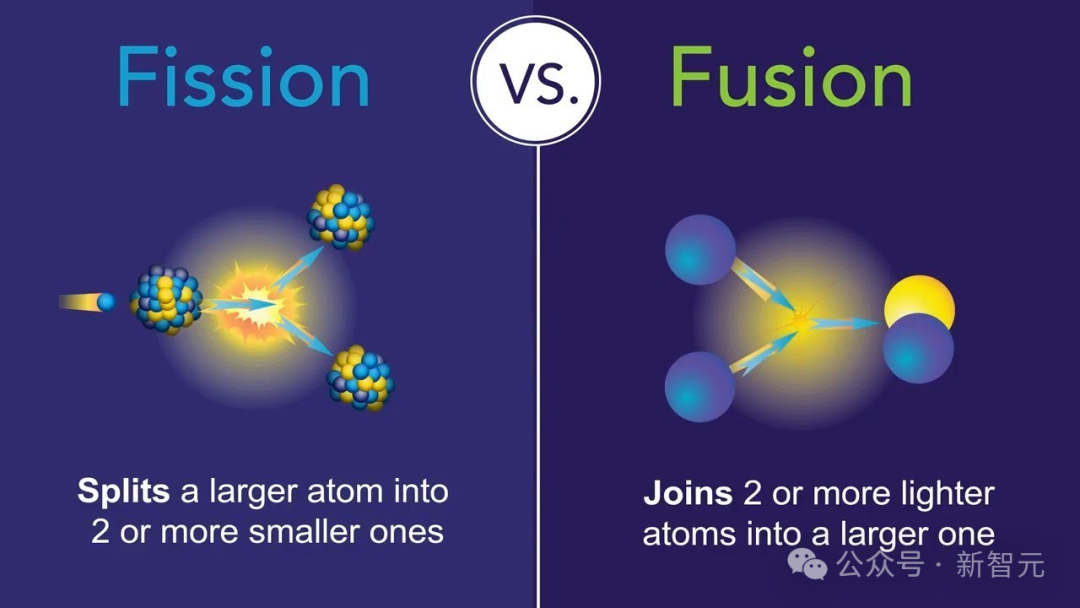
The process of fusion is the opposite of the currently widely used nuclear fission process, which relies on splitting atoms
Fusion occurs when two atoms - usually light atoms, such as hydrogen - merge into a heavier atom, releasing a huge amount of energy.
This process is the source of energy from the sun and indirectly supports life on earth. However, it is very difficult to fuse two atoms because it requires tremendous pressure and energy to overcome the mutual repulsion between them.
The reason why the sun can achieve fusion reactions depends on its huge gravity and the extremely high pressure at its core. To simulate this process on Earth, scientists used extremely hot plasma and powerful magnetic fields.
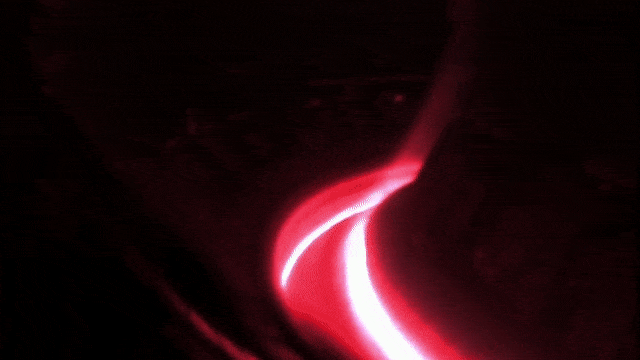 Picture
Picture
In a tokamak (shaped like a donut), magnetic fields work hard to control temperatures exceeding 100 million degrees Celsius Plasma, which is hotter than the center of the sun
However, during the nuclear fusion process, experts can often only achieve short-term maintenance of fusion energy, and there are many instabilities in the process sex.
This is because, in the process of realizing nuclear fusion energy, one of the most critical steps is to input hydrogen variant fuel and heat it up in the tokamak to produce Plasma similar to "soup".
But plasma is difficult to control—it "tear apart" easily and escape the powerful magnetic fields used to restrain it.

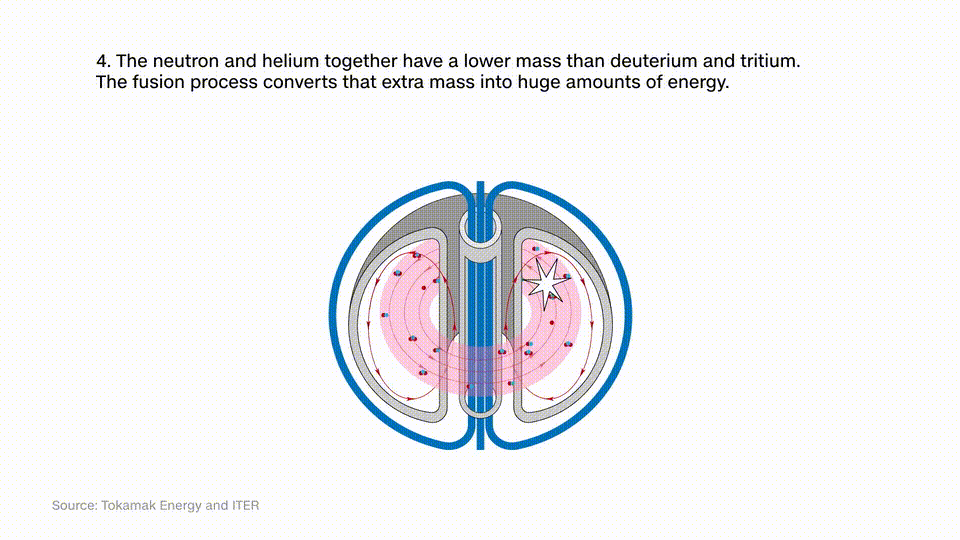
Fortunately, researchers from Princeton University and the Princeton Plasma Physics Laboratory recently published a paper in Nature Report, they found a way to use AI to predict this potential instability and prevent experiment interruptions in real time.
This team is composed of engineers, physicists, and data scientists.
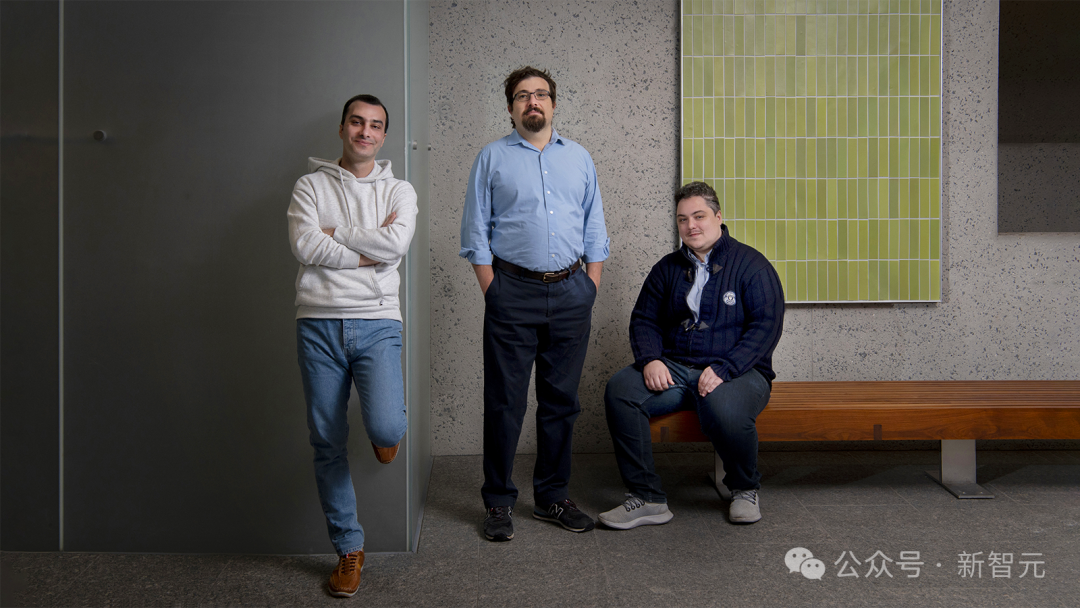
From left to right: Azarakhsh Jalalvand, Egemen Kolemen and Ricardo Shousha
In experiments conducted at the DIII-D National Fusion Facility in San Diego, the research team found that-
Their AI control system was able to Potential tearing of the plasma is predicted.
And without this intervention, the fusion reaction is likely to be interrupted suddenly!
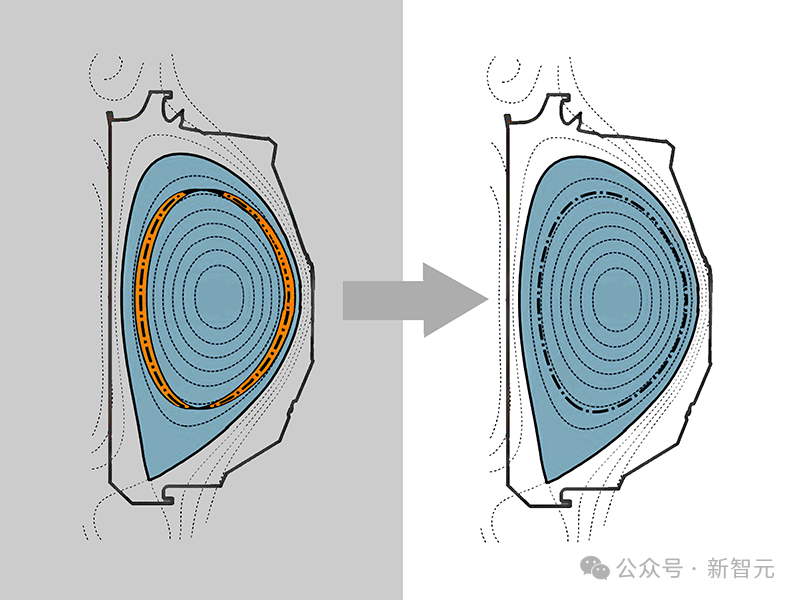
Researchers used AI to predict and avoid the formation of tear instability (left), which can quickly lead to Plasma destruction and fusion reaction termination
At this point, the plasma instability problem that has long hindered the development of nuclear fusion has finally been overcome by humans.
This discovery has also greatly enhanced the confidence of scientists.
Egemen Kolemen, a professor in the Department of Mechanical and Aerospace Engineering at Princeton University and one of the authors of the study, explains why this discovery is so significant.
Interruptions and instability are one of the major obstacles to controllable nuclear fusion. We all hope that any reactor can continue to operate stably for many years. Now that such a solution has been developed, our confidence has been greatly increased that it is now possible to operate these units without any glitches.
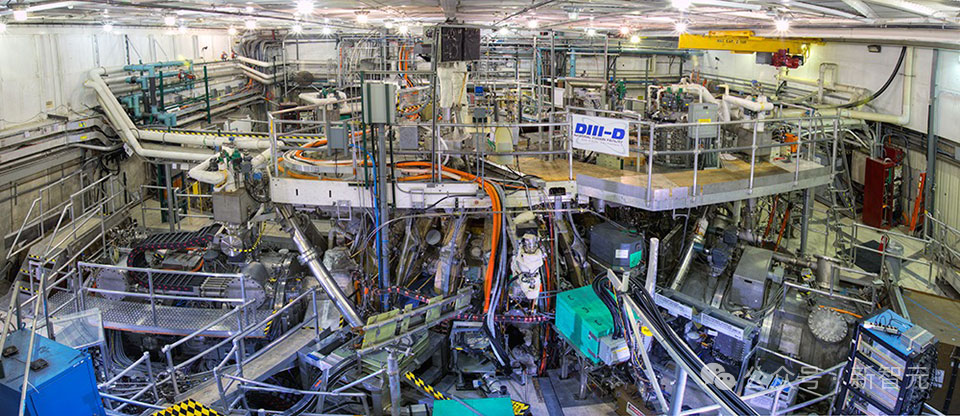
AI successfully implements plasma state control strategy
How does AI achieve it?
The model presented by the researchers shows that it can predict "tear mode instability" (i.e., by analyzing past experimental data alone, rather than relying on physical models) potential plasma instability).
Moreover, it can predict up to 300 milliseconds in advance!
For humans, this period of time may only be a blink of an eye, but for the AI controller, it is enough for it to adjust the operating parameters to avoid internal tearing of the plasma magnetic field. crack, thereby maintaining its stable state and preventing the reaction from ending prematurely.

In this process, AI successfully implemented a control strategy for a stable, high-energy plasma state in a real reactor in real time.
This method is more dynamic than the original method.
Jaemin Seo, an assistant professor of physics at Chung-Ang University and the first author of the paper, explained: "Previous research usually focused on suppressing or mitigating these tearing instabilities after they appear in the plasma. Its effects. But our method can predict and avoid these instabilities before they form."
AI Plasma Physics=?
Researchers will think of AI because tearing mode instability occurs too suddenly and too quickly!
To react within a few milliseconds, quickly process new data and respond, only AI can do it.
However, developing an effective AI control system is not easy.
What's more, in a tokamak environment, experimental time is extremely precious and the risks are extremely high.
According to Azarakhsh Jalalvand, co-author of the paper, teaching AI algorithms to control the fusion reaction in a tokamak is like teaching a person to fly an airplane.
You not only have to give the AI a key and let it explore on its own, but you also have to let it practice repeatedly in a complex flight simulator until it masters sufficient skills.
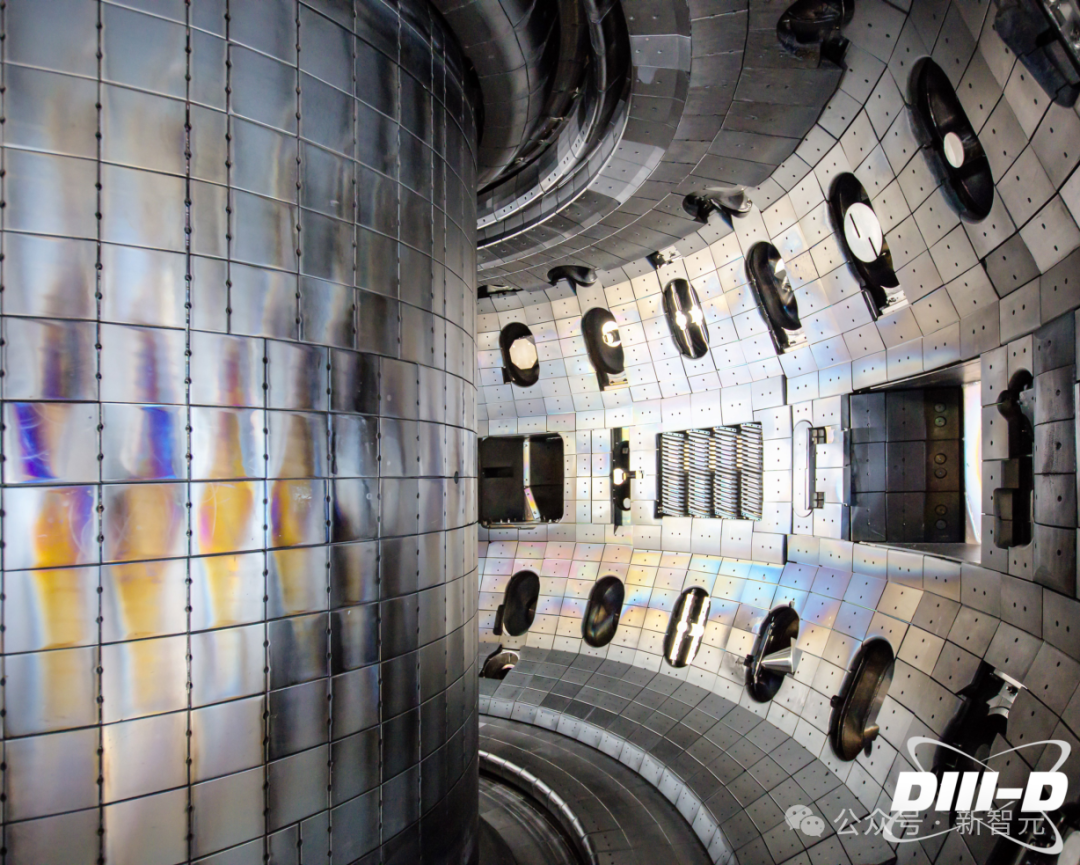
Deep Neural Network
Therefore, the Princeton team adopted the DIII-D tokamak from past experiments Based on the data, a deep neural network is constructed, which can predict the occurrence probability of tearing mode instability in the future based on real-time plasma characteristics.
Using this neural network, the researchers trained a reinforcement learning algorithm.
This algorithm is like a learning pilot. Through trial and error in a simulated environment, it learns various strategies for controlling plasma and finds out which ones are effective and which ones are ineffective. of.
Jalalvand explained that instead of teaching the reinforcement learning model the complex physics of fusion reactions, they told it: Your goal is to maintain a high-power reaction and avoid tearing modes. stability, and indicate parameters that can be adjusted.
In countless simulated fusion experiments, models try to find ways to maintain high power levels while avoiding instabilities.
Over time, the algorithm itself learns the optimal path to achieve high-power response while avoiding instability!
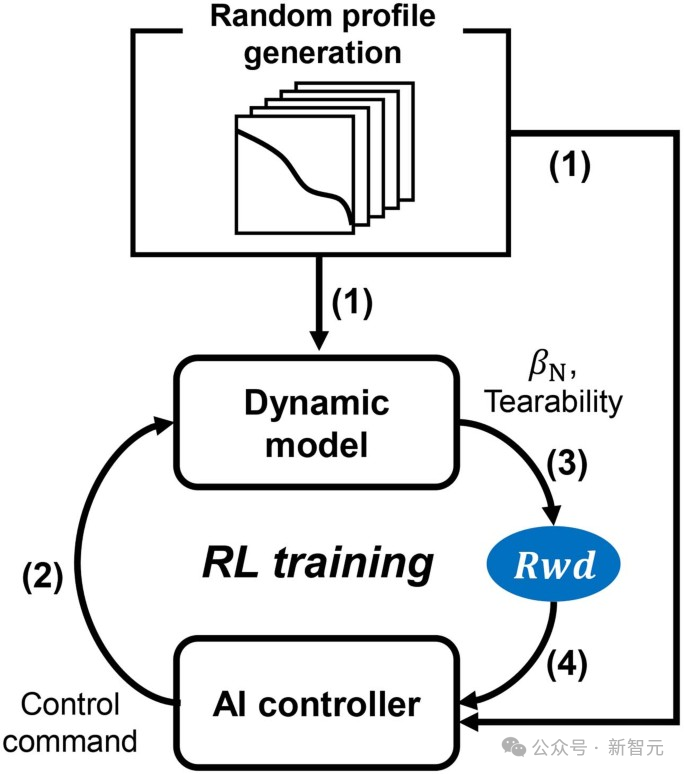
Co-author SangKyeun Kim said: "We can see the logic behind the model's intention. Sometimes the model wants to change too quickly, and we It is necessary to make the behavior of the model smoother and more stable. As humans, we need to find a balance between the intention of the AI and the actual tolerance of the tokamak."
Once the researchers were confident enough in the AI controller's capabilities, they tested it in an actual fusion experiment on the D-III D tokamak, observing how the controller adjusted specific parameters in real time to avoid instabilities, including Change the plasma shape and beam intensity of the input reaction.
The results show that AI can successfully predict instability!
In this way, researchers are no longer passive and do not need to wait until plasma runaway has occurred before taking measures.
Design of reinforcement learning system for control
According to the introduction of the paper, the AI controller designed by the researchers can automatically adjust control according to the monitored plasma state. to ensure the stability of the plasma while increasing its pressure as much as possible.

Figure 1: System design framework
Figures 1a and 1b: A typical plasma in the experiment body samples, as well as the diagnostic tools and control equipment used in the study. Among them, on the q = 2 magnetic flux surface, 2/1 mode tearing instability may occur.
Figure 1c: Control system architecture capable of processing measurement signals and generating corresponding actuator instructions.
Figure 1d: The DNN-based AI controller is able to determine high-level control commands for overall beam power and plasma shape based on the trained strategy. The Plasma Control System (PCS) is responsible for calculating the control signal of the magnetic coil and the power of each beam to ensure that it not only meets the advanced control requirements set by the AI controller, but also complies with the restrictions set by the user.
System Design
To efficiently produce fusion energy, the key is to maintain a high pressure in the plasma while avoiding triggers that could cause the equipment to suddenly stop operating. instability phenomenon.
However, when the plasma is heated to increase its pressure, for example by a neutral beam, a threshold is encountered (black line in Figure 2a).
Beyond this threshold, the plasma will experience tearing instability, which may quickly lead to plasma rupture (Figures 2b and 2c).
It is worth noting that this stability threshold will change as the plasma state changes, and in some cases, reducing the pressure may also trigger instability.
As shown by the blue line in Figure 2, by adjusting the operation of the controller according to the state of the plasma, it is possible to pursue higher performance without causing instability. Plasma pressure.
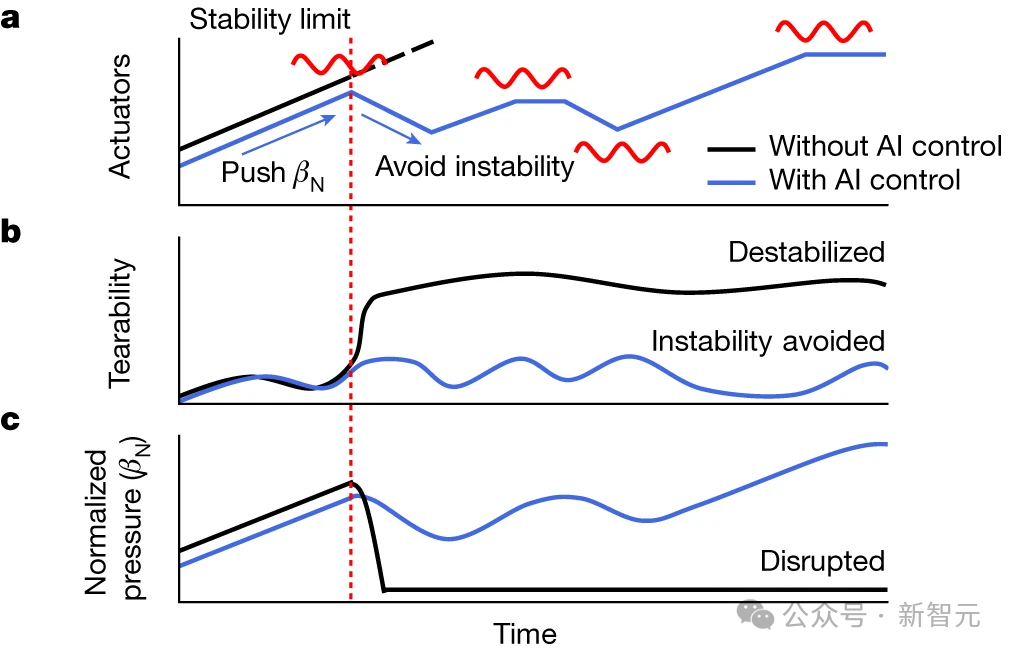
Figure 2: AI tear avoidance system’s response to tokamak control and plasma
In fact, we can understand it as an "obstacle avoidance problem", where the obstacles are risk factors that force the termination of the experiment.
Specific to nuclear fusion itself, it is to control the tokamak device to make the plasma run along a narrow path that maintains high pressure without exceeding the stability limit.
To achieve this goal, the researchers trained an Actor model through reinforcement learning methods and designed a reward function R to measure what the plasma can achieve under an acceptable risk of tearing. What a high pressure.
β_N here represents the normalized value of plasma pressure, T represents the risk of tearing, and k is an artificially set safety threshold. More specifically, β_N and T are the predicted results 25 milliseconds after the AI controller takes action.
According to this prediction, if the tearing risk is lower than the threshold we set, the Actor model will receive a positive reward according to the pressure of the plasma; otherwise, it will receive a negative reward.

In order to obtain a higher reward according to equation (1), the Actor first needs to increase the value of β_N through its control actions.
However, an increase in β_N may cause the plasma to become unstable and eventually cause the tearing indicator (T) to exceed the safety threshold (k), which will lead to a reduction in rewards. In particular, when T exceeds k, the reward decreases sharply.
Therefore, the control agent will give priority to keeping T below the safety threshold k, rather than simply pursuing improving β_N.
Through sufficient reinforcement learning training, Actor can eventually find a balancing strategy that can pursue high plasma pressure while ensuring that the tearing indicator remains within a safe range.
This strategy allows the tokamak to follow a precisely planned path during discharge, as shown in Figure 2d.
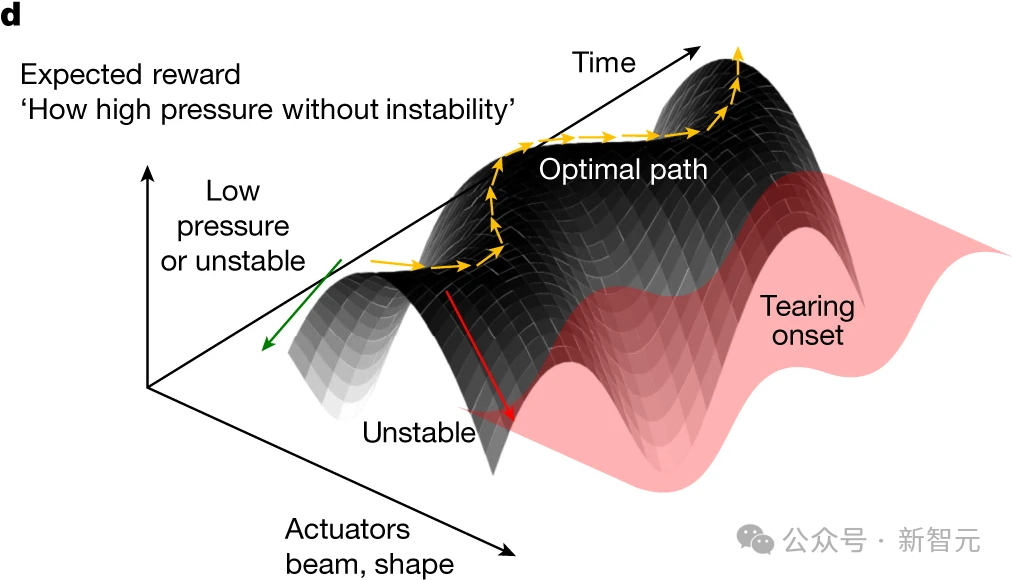
Figure 2: AI tear avoidance system’s response to tokamak control and plasma
Since the occurrence of tearing depends largely on its spatial information and gradient, the observation variables are set to one-dimensional dynamics and magnetic profiles mapped in flux coordinates.
Specifically, the curves of electron density, electron temperature, ion rotation, safety factor and plasma pressure are observed.
Experimental results
The black line in Figure 3b shows an example of plasma interruption due to tear instability.
In this discharge, a specific parameter level (β_N = 2.3) was maintained using conventional feedback control. However, at 2.6 seconds, severe tearing instability occurred, resulting in a sharp drop in parameters and ultimately a plasma interruption at 3.1 seconds.
The blue line in Figure 3b is the beam power and plasma shape under AI control. Figure 3c and Figure 3d respectively show the adjustment of plasma shape and beam power during the specific control process.
During this discharge, the AI controller formulated adjustment instructions for beam power and shape based on real-time plasma data, which were converted into specific instructions by the plasma control system (PCS). operations such as adjusting the magnetic coil current and precisely controlling the power of the eight beams.
The blue line in Figure 3e is the subsequent estimate of the AI-controlled discharge. It can be seen that the tearing tendency was effectively controlled below the predetermined threshold during the entire process, fully in line with expectations.
This experiment not only proves that AI control can more effectively reduce the risk of tearing than traditional control methods, but also demonstrates its improvement in overall performance compared to the reference experiment, reflecting Taking advantage of AI adaptive control.
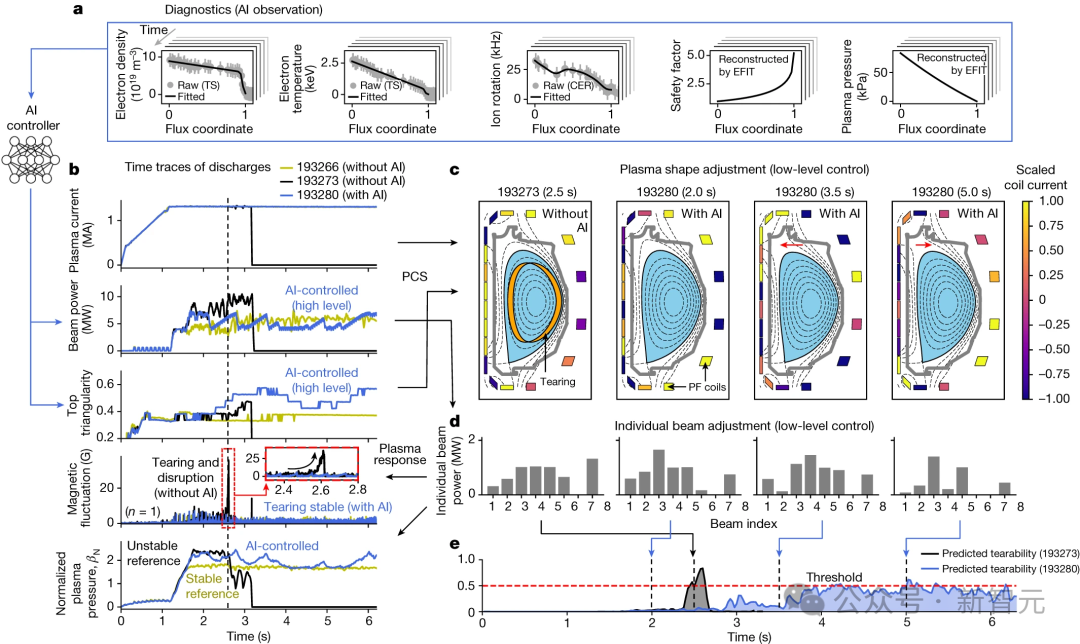
Figure 3: Tear avoidance experiment based on AI capabilities
Figure 4a shows different applications Three experiments were conducted with the controller setting thresholds, respectively, 0.2, 0.5, and 0.7.
Among them, when the threshold is set to 0.5 and 0.7, the plasma can continue stably, and no destructive instability occurs until the end of the experiment.
Figures 4b to 4d show the tearing tendency analyzed after three experiments. The background color in the figure shows the predicted tearing tendency under different beam powers at each time point, the actual used beam power is marked by the black line, and the dotted line indicates the tearing tendency level at different thresholds.
It can be seen that different threshold settings will cause AI control to show different behavioral characteristics.
The analysis of Figure 4b shows that the tear prediction model can warn 300 milliseconds before instability occurs, and the controller also attempts to further reduce the beam power.
In Figure 4c, the AI controller with k = 0.5 is set to respond to instability warnings by taking steps in advance to actively avoid hitting the threshold.
Because the reward mechanism is calculated based on the tearing tendency 25 milliseconds after the controller takes action, the trained controller will take action tens of milliseconds before the warning occurs.
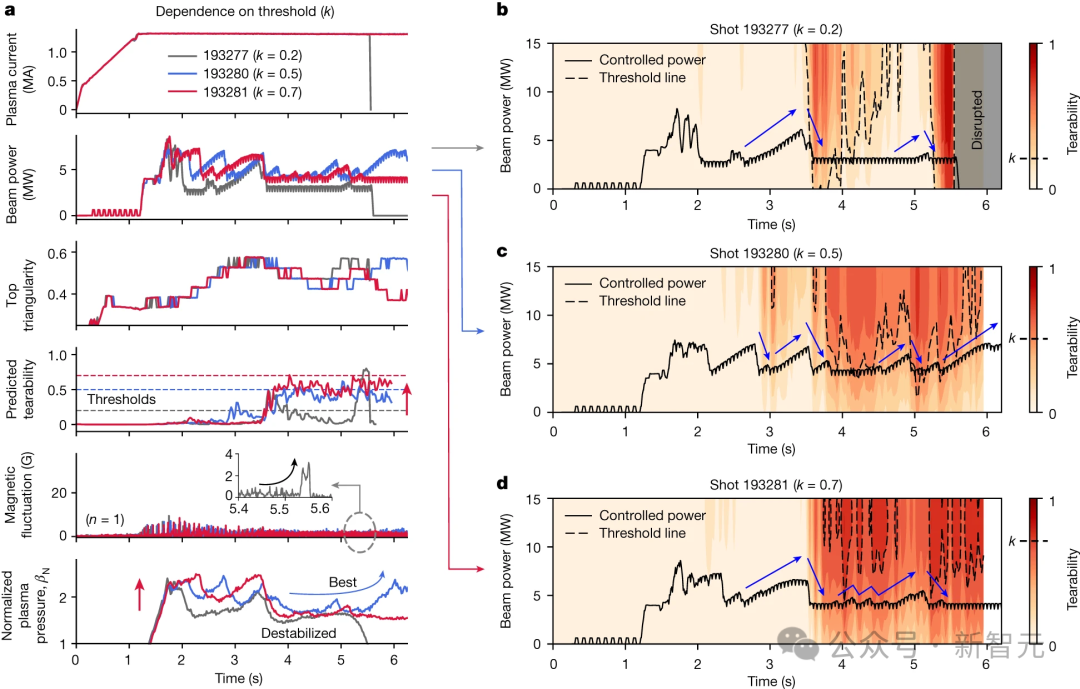
Figure 4: Comparative experiment with different threshold settings
Lighting up the road to the future
The researchers noted that while this work successfully demonstrated the potential of AI in effectively controlling fusion reactions, it was only the first step in advancing the field of fusion research.
First, they plan to collect more evidence on DIII-D to prove the actual effectiveness of the AI controller, and then expand its application to other tokamak devices.
"We have good evidence that this controller performs well on DIII-D, but we need more data to prove that it can handle a variety of different situations," Yizuo Seo express. "Our goal is to develop a more general solution."

The second research direction is to extend this algorithm to enable AI control The processor can handle more instability problems at the same time.
Ricardo Shousha, a former graduate student in Kolemen’s team and currently a PPPL postdoctoral fellow and co-author, explained: “You can imagine that there is a comprehensive reward function that adjusts multiple Parameters to control multiple instabilities simultaneously."
In the process of developing better AI controllers to control fusion reactions, researchers may also be able to control plasma There is a deeper understanding of the underlying physics.
By analyzing the decisions made by AI controllers when maintaining plasma stability, it can be found that they are often very different from traditional methods.
This shows that AI can not only become an effective tool for controlling nuclear fusion reactions, but also serve as a new teaching resource to help us understand and explore fusion science from different perspectives.
Team introduction
Jaemin Seo

The first work, Jaemin Seo, is focused on Postdoctoral researcher applying machine learning techniques for plasma prediction and control in KSTAR and DIII-D projects.
Jaemin received his PhD from the Department of Nuclear Engineering, Seoul National University. During this period, he innovatively used reinforcement learning methods to design a new plasma control algorithm for KSTAR.
Currently, his research focus has turned to exploring tearing mode prediction and control technology in the DIII-D project.
In addition, Jaemin is also working on a fast neural network model aimed at reconstructing the dynamic equilibrium state of the plasma in real time, which is important for improving the efficiency and accuracy of the control algorithm. significance.
Egemen Kolemen

Corresponding author Egemen Kolemen is an associate professor of mechanical and aerospace engineering at Princeton University and holds positions at the Andlinger Center for Energy and the Environment and the Princeton Plasma Physics Laboratory (PPPL).
As the leader of the Sustainable Energy Project, he received the David J. Rose Excellence Award for his outstanding contributions to the field of fusion engineering and was selected as an ITER Scientist Fellow.
Professor Kolemen’s research is dedicated to combining engineering technology with physical analysis, aiming to develop cost-effective fusion reactors. Currently, he is leading the team to conduct research on machine learning, real-time monitoring and control in the KSTAR, NSTX-U and DIII-D projects.
The above is the detailed content of A new milestone in controllable nuclear fusion! AI successfully predicts plasma tearing in Nature, bringing the 'Holy Grail' of clean energy one step closer. For more information, please follow other related articles on the PHP Chinese website!

Hot AI Tools

Undresser.AI Undress
AI-powered app for creating realistic nude photos

AI Clothes Remover
Online AI tool for removing clothes from photos.

Undress AI Tool
Undress images for free

Clothoff.io
AI clothes remover

AI Hentai Generator
Generate AI Hentai for free.

Hot Article

Hot Tools

Notepad++7.3.1
Easy-to-use and free code editor

SublimeText3 Chinese version
Chinese version, very easy to use

Zend Studio 13.0.1
Powerful PHP integrated development environment

Dreamweaver CS6
Visual web development tools

SublimeText3 Mac version
God-level code editing software (SublimeText3)

Hot Topics
 1378
1378
 52
52
 How to implement file sorting by debian readdir
Apr 13, 2025 am 09:06 AM
How to implement file sorting by debian readdir
Apr 13, 2025 am 09:06 AM
In Debian systems, the readdir function is used to read directory contents, but the order in which it returns is not predefined. To sort files in a directory, you need to read all files first, and then sort them using the qsort function. The following code demonstrates how to sort directory files using readdir and qsort in Debian system: #include#include#include#include#include//Custom comparison function, used for qsortintcompare(constvoid*a,constvoid*b){returnstrcmp(*(
 How to optimize the performance of debian readdir
Apr 13, 2025 am 08:48 AM
How to optimize the performance of debian readdir
Apr 13, 2025 am 08:48 AM
In Debian systems, readdir system calls are used to read directory contents. If its performance is not good, try the following optimization strategy: Simplify the number of directory files: Split large directories into multiple small directories as much as possible, reducing the number of items processed per readdir call. Enable directory content caching: build a cache mechanism, update the cache regularly or when directory content changes, and reduce frequent calls to readdir. Memory caches (such as Memcached or Redis) or local caches (such as files or databases) can be considered. Adopt efficient data structure: If you implement directory traversal by yourself, select more efficient data structures (such as hash tables instead of linear search) to store and access directory information
 How to set the Debian Apache log level
Apr 13, 2025 am 08:33 AM
How to set the Debian Apache log level
Apr 13, 2025 am 08:33 AM
This article describes how to adjust the logging level of the ApacheWeb server in the Debian system. By modifying the configuration file, you can control the verbose level of log information recorded by Apache. Method 1: Modify the main configuration file to locate the configuration file: The configuration file of Apache2.x is usually located in the /etc/apache2/ directory. The file name may be apache2.conf or httpd.conf, depending on your installation method. Edit configuration file: Open configuration file with root permissions using a text editor (such as nano): sudonano/etc/apache2/apache2.conf
 How Debian OpenSSL prevents man-in-the-middle attacks
Apr 13, 2025 am 10:30 AM
How Debian OpenSSL prevents man-in-the-middle attacks
Apr 13, 2025 am 10:30 AM
In Debian systems, OpenSSL is an important library for encryption, decryption and certificate management. To prevent a man-in-the-middle attack (MITM), the following measures can be taken: Use HTTPS: Ensure that all network requests use the HTTPS protocol instead of HTTP. HTTPS uses TLS (Transport Layer Security Protocol) to encrypt communication data to ensure that the data is not stolen or tampered during transmission. Verify server certificate: Manually verify the server certificate on the client to ensure it is trustworthy. The server can be manually verified through the delegate method of URLSession
 How debian readdir integrates with other tools
Apr 13, 2025 am 09:42 AM
How debian readdir integrates with other tools
Apr 13, 2025 am 09:42 AM
The readdir function in the Debian system is a system call used to read directory contents and is often used in C programming. This article will explain how to integrate readdir with other tools to enhance its functionality. Method 1: Combining C language program and pipeline First, write a C program to call the readdir function and output the result: #include#include#include#includeintmain(intargc,char*argv[]){DIR*dir;structdirent*entry;if(argc!=2){
 Debian mail server SSL certificate installation method
Apr 13, 2025 am 11:39 AM
Debian mail server SSL certificate installation method
Apr 13, 2025 am 11:39 AM
The steps to install an SSL certificate on the Debian mail server are as follows: 1. Install the OpenSSL toolkit First, make sure that the OpenSSL toolkit is already installed on your system. If not installed, you can use the following command to install: sudoapt-getupdatesudoapt-getinstallopenssl2. Generate private key and certificate request Next, use OpenSSL to generate a 2048-bit RSA private key and a certificate request (CSR): openss
 Debian mail server firewall configuration tips
Apr 13, 2025 am 11:42 AM
Debian mail server firewall configuration tips
Apr 13, 2025 am 11:42 AM
Configuring a Debian mail server's firewall is an important step in ensuring server security. The following are several commonly used firewall configuration methods, including the use of iptables and firewalld. Use iptables to configure firewall to install iptables (if not already installed): sudoapt-getupdatesudoapt-getinstalliptablesView current iptables rules: sudoiptables-L configuration
 How to learn Debian syslog
Apr 13, 2025 am 11:51 AM
How to learn Debian syslog
Apr 13, 2025 am 11:51 AM
This guide will guide you to learn how to use Syslog in Debian systems. Syslog is a key service in Linux systems for logging system and application log messages. It helps administrators monitor and analyze system activity to quickly identify and resolve problems. 1. Basic knowledge of Syslog The core functions of Syslog include: centrally collecting and managing log messages; supporting multiple log output formats and target locations (such as files or networks); providing real-time log viewing and filtering functions. 2. Install and configure Syslog (using Rsyslog) The Debian system uses Rsyslog by default. You can install it with the following command: sudoaptupdatesud



